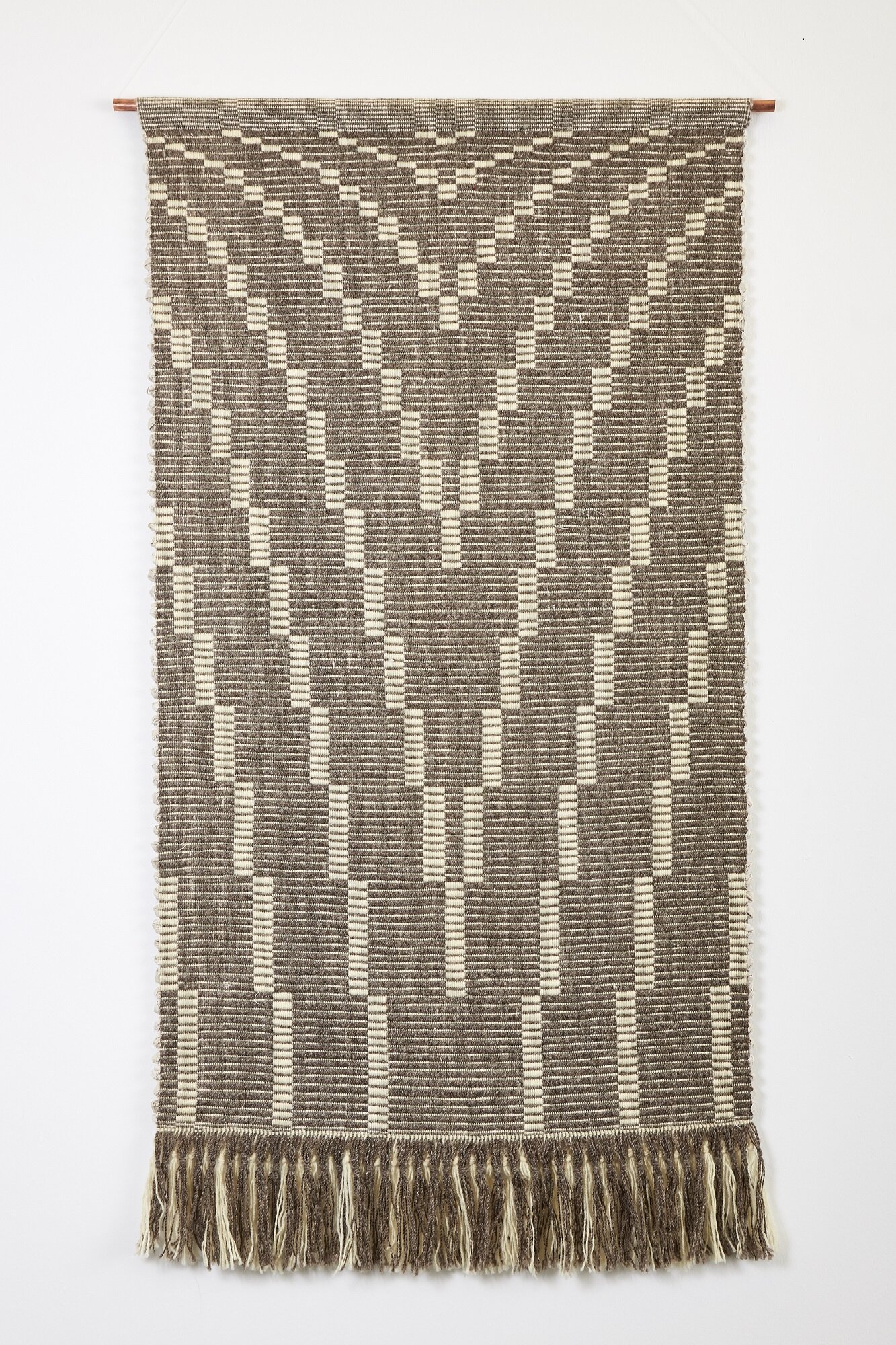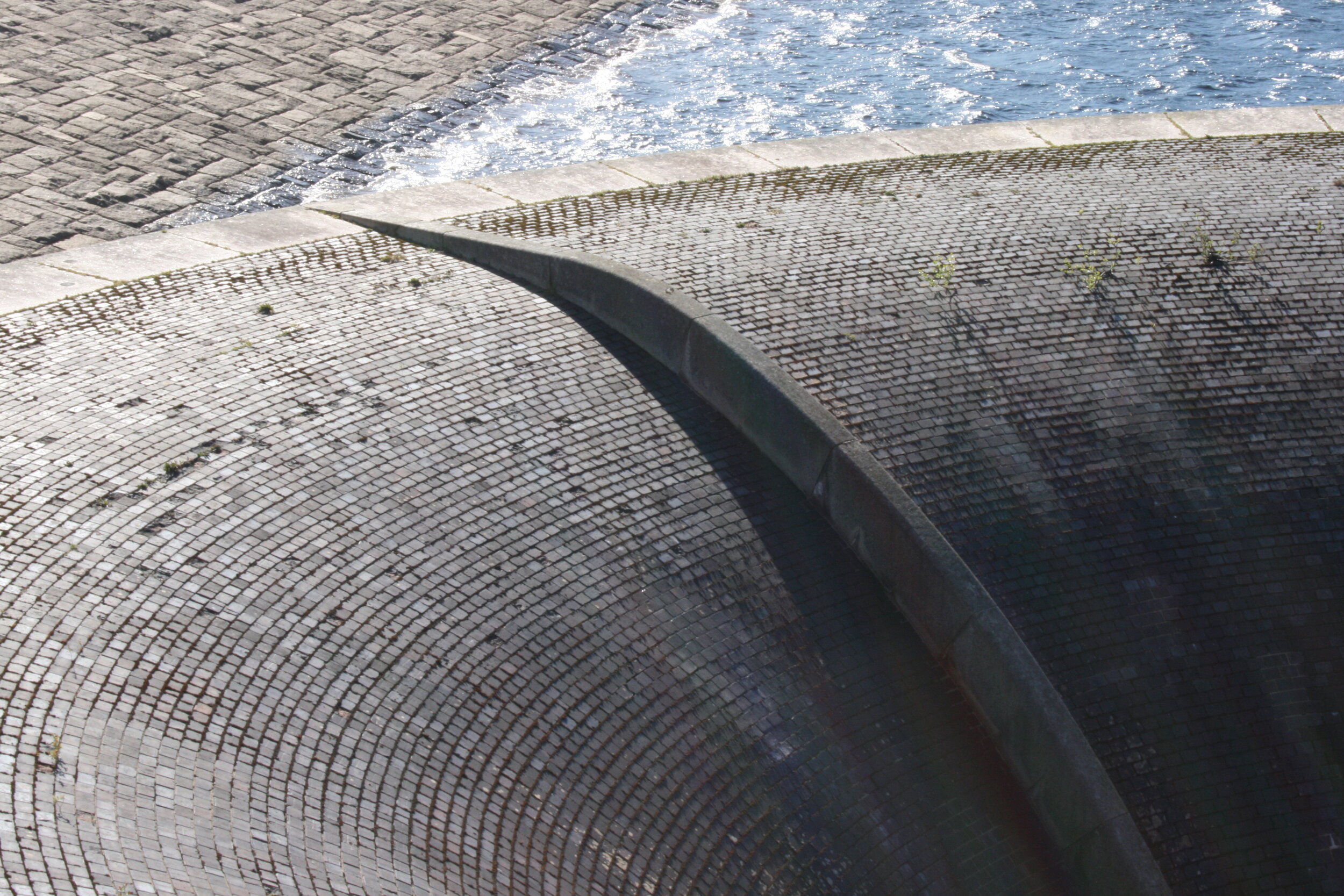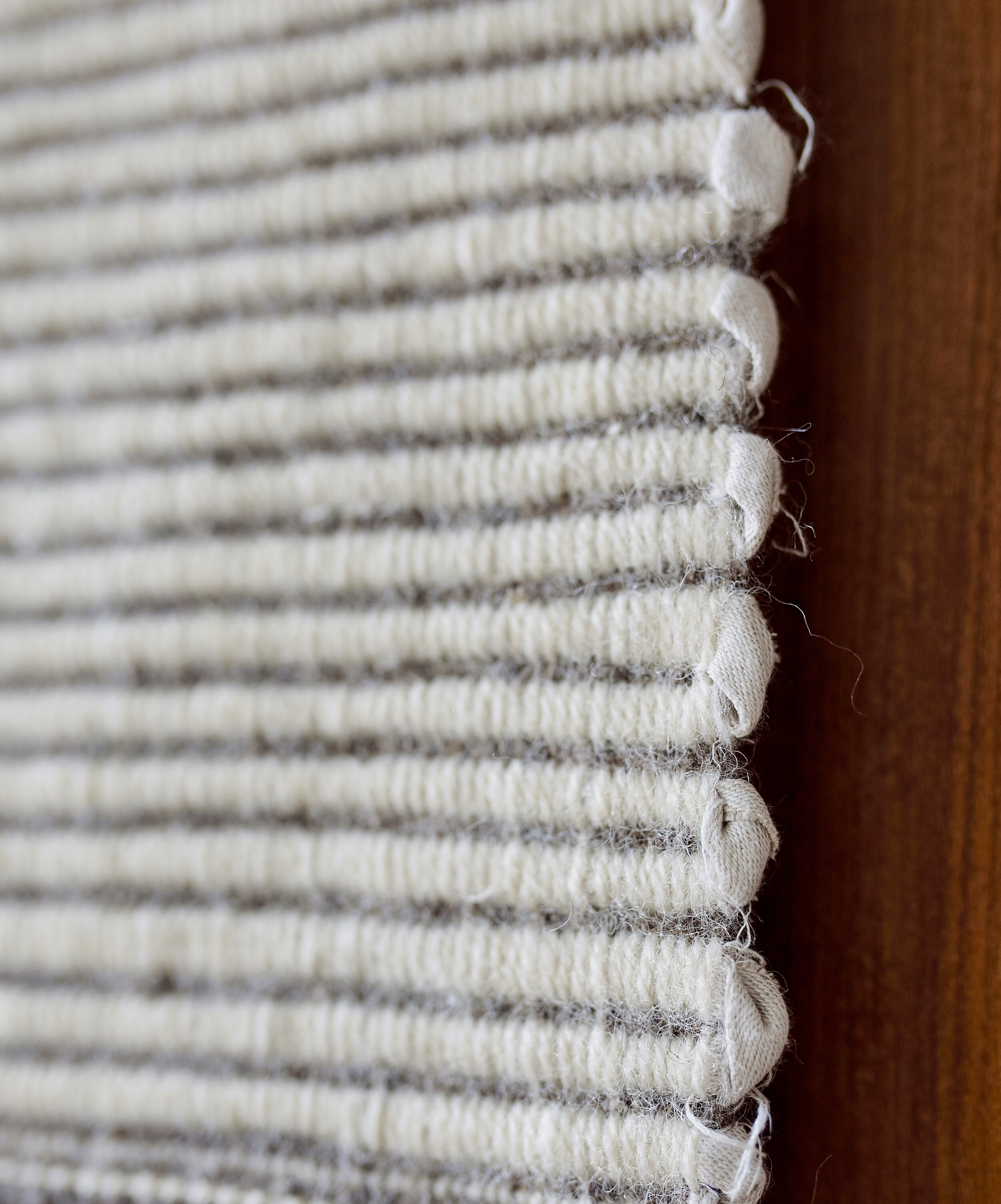Film Makers Project: Rep Weave & Local Wool
Silent Valley I, woven with locally-sourced wool and linen, 78cm x 145cm approx. Photo: Simon Mills
This week I had the pleasure of visiting the newly-relocated Space Craft NI shop & gallery space at 115-119 Royal Avenue, Belfast. My ‘Silent Valley I’ wall hanging is currently on display there. I wove this piece back in 2017 as part of the ‘Film Makers’ project and have been meaning to write a little about this work for some time.
In celebration of Northern Ireland’s rich craft landscape past and present, makers were invited to produce new work in response to heritage footage from the Northern Ireland Screen Digital Film Archive. The making of the new work was filmed by TACA to act as a record of contemporary craft making. These films were exhibited alongside the artworks at R-Space Gallery in Lisburn for the initial 2016 phase of the project. The project was developed further for a second exhibition in 2017 at Mid-Antrim Museum in The Braid, Ballymena. The participating artists in addition to myself were Sharon Adams, Sheena Devitt, Alison Fitzgerald, Ronan Lowery and Peter Surginor, working in stone, basketry, ceramics, wood, metal and textiles.
Film Makers exhibition in Mid-Antrim Museum at The Braid, 2017. Photo: Simon Mills
When we viewed the footage of traditional crafts from the Digital Film Archive, I was struck by how much of it emphasised the close ties between land, agriculture and craft. I was particularly inspired by Land of Ulster, a documentary commissioned for the 1951 Festival of Britain in Northern Ireland. It shows local farming practices, including the harvesting of flax and dry stone wall building in the Mournes.
The narrator comments that the walls look ‘as if they’ve been knitted with giant knitting needles, and every stitch was a stone’. The film shows men taking large stones from the land, where they may have been a nuisance to farming, splitting them with hammer and chisel and using them on site to build walls as field boundaries.
Using the dry-stone walls of the Mournes as my inspiration, I designed a double-sided wall-hanging made with locally sourced wool and linen factory waste.
Flax was once grown widely in Ulster to meet the demands of the linen industry. It has since largely disappeared from our fields, but we still have a few surviving weaving factories, such as Ferguson’s of Banbridge, who provided me with the waste linen cloth used as a rag weft in the woven pieces I created for this project.
I sourced woollen yarn from Freda Magill of The Wool Initiative, Rathfriland, for the warp of my woven pieces. The wool came from fleeces produced by sheep farmers in Northern Ireland – the cream-coloured yarn from Romney sheep, County Antrim and the grey from Jacob sheep reared in County Down.
Examining the wool clip with Freda Magill of The Wool Initiative. Photo: Simon Mills
Photo: Simon Mills
Freda Magill’s flock. Photo: Simon Mills
I used a ‘rep-weave’ technique, composed of blocks of contrasting colour. This woven structure creates a double-sided textile – the areas that are dark one side are light on the other and vice-versa. The textile is ‘warp-faced’, meaning that the woollen yarn running vertically is visually dominant, while the thick linen rag weft gives the cloth weight and creates a heavily ribbed surface.
It was a real challenge to weave, and very physical work, as the densely-spaced warp was incredibly sticky to separate when treadling the design on my Swedish countermarch loom. This is probably why rep-weave is usually used with smooth yarns like cotton and linen!
I think the result made all the effort worthwhile though, as the loftiness of the woollen fibres and linen-packed ribbed surface means that these pieces would be ideal for helping to dampen sounds and add texture to a modern room.
Every Stitch A Stone II, 78cm x 145cm approx. Photo: Simon Mills
The rep-weave technique offers many design possibilities so I decided to develop this further during the second phase of the project in 2017. Thinking a little more about stone walls of the Mournes, traditional labour practices and inspired by a modern BBC documentary, I became interested in the Silent Valley reservoir and visited this site for inspiration. The woven design I developed attempts to explore how a curve can be constructed from straight lines, inspired by the beautiful curved brick structure of the overflow in the reservoir.
The Silent Valley reservoir was built between 1901-1933, to gather water from the Mourne Mountains and to supply water for most of County Down and most of Belfast. The 22-mile long ‘Mourne Wall’, built during the same period, marks the boundary of the catchment area, crossing 15 mountains along the way. A temporary settlement, known as Watertown, was built to house and service the construction workers and their families. It included a shop, hospital, cinema/dance hall and a small power station.
Over 2000 men worked on the whole scheme; sadly 8 of the workers died during construction of the Silent Valley Reservoir.
Silent Valley Reservoir
Silent Valley I. Photo: Simon Mills
Detail showing the linen rag weft and woollen warp used in these pieces. Photo: Simon Mills
To view a video of this work being created alongside the archive film footage that inspired it, please visit https://digitalfilmarchive.net/media/film-makers-nicola-gates-2147
Thank-you to R-Space Gallery, Northern Ireland Screen, Mid-Antrim Museum and the Arts Council of Northern Ireland for supporting this project. Also many thanks are due to Lorna and Simon Mills of TACA for filming us makers at work, and to Sinéad Breathnach-Cashell for curating the exhibitions with such wonderful attention to detail.












